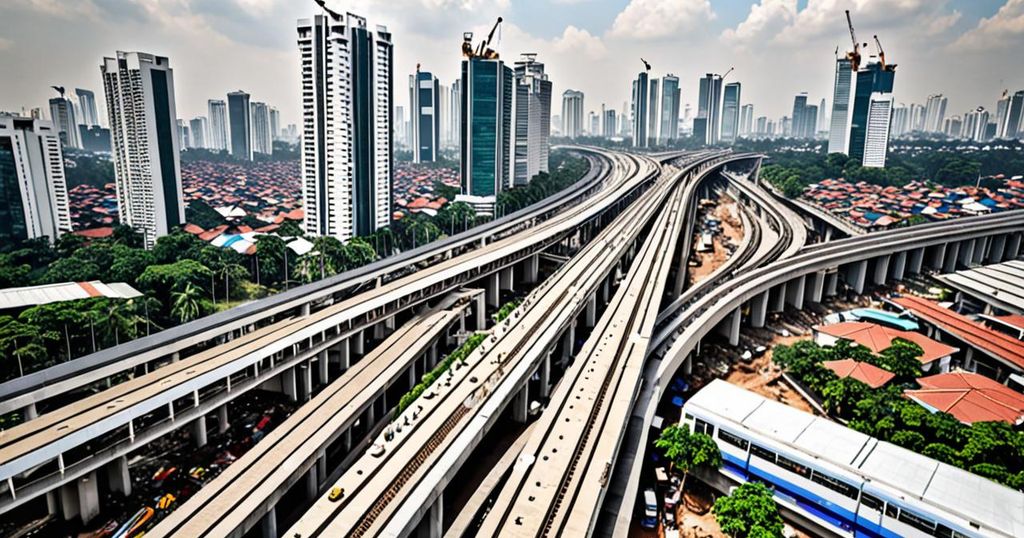Urban Development in Jakarta: Lessons from the MRT Project
As the economies in Southeast Asia continue to grow and develop, the necessity for efficient and accessible urban infrastructure becomes increasingly apparent. This shift is especially evident in countries like Indonesia, which recently reached upper middle income status and is home to a rapidly modernizing economy with a growing urban population. Jakarta, the capital, faces numerous challenges as a mega-city of over 10 million people, a figure that more than triples when considering the greater metropolitan area. With nearly 50 million daily commuters, Jakarta’s transport infrastructure is under immense strain.
The demand for accessible and affordable transportation in densely populated areas is evident, with the goals of reducing congestion, pollution, and emissions, while simultaneously enhancing economic access. Given projections that 66% of Southeast Asia’s population will be urbanized by 2050, it is crucial for development partners to take note of infrastructure projects that are bringing about transformative changes in cities across the region. One standout example is the mass rapid transit (MRT) system in Jakarta, which is backed by Japan and serves as a valuable model for urban development.
In addition to severe air quality issues, residents in Jakarta can spend up to 20% of their monthly income on transportation. Despite these challenges, significant progress has been made, with Jakarta’s public transport area coverage increasing by 400% from 2015 to 2019. Notably, informal urban passenger transport modes such as motorcycle taxis have played a crucial role and are undergoing a transition towards digitalization, formalization, and regulation through mobility apps like Gojek and Grab.
The funding for transformative public transport systems in Jakarta was a major hurdle, which was overcome with support from the Japan Bank for International Cooperation (JBIC). The corporate structure of the MRT ensures local ownership of institutional knowledge, which maximizes the potential for technology transfer, a key benefit for large-scale infrastructure projects in developing economies.
The project planning for the Jakarta MRT was meticulous, taking into account compatibility with other public transport systems, environmental concerns, and even geographical factors such as the city’s susceptibility to earthquakes and flooding. The incorporation of transit-oriented development (TOD) and land value capture (LVC) frameworks further demonstrates an innovative approach to urban development. TOD emphasizes the integration of public transit with commercial and residential spaces to limit private vehicle usage and urban sprawl. Meanwhile, LVC supports revenue generation by leveraging increased property values to finance urban development and public services around public transport hubs.
The viability of the MRT relies on diverse revenue streams that include non-fare sources like advertising and retail space rentals within the stations. Additionally, Japan’s provision of funds has been pivotal for the project’s development, with a forecasted economic internal rate of return that surpasses the financial internal rate of return. While the project experienced initial delays, it is now operational and serves as a testament to the success of the TOD-LVC model.
As the MRT continues to operate and expand, it represents a significant achievement for urban development in Jakarta. The high-level political support from the Indonesian government, including strong backing from outgoing president Joko Widodo, has been instrumental in driving the project forward despite various legal and regulatory challenges.
Looking ahead, the success of the MRT will be a crucial test for the potential expansion of similar systems, particularly considering the plans for a new Indonesian capital, Nusantara. With the completion of the north-south line and plans for the east-west route, the MRT’s impact and potential for replication serve as valuable lessons for urban development in other developing countries.
In conclusion, the Jakarta MRT presents a compelling case study for the transformative impact of a large-scale infrastructure project on urban development. By leveraging international partnerships, innovative frameworks, and diverse revenue streams, the MRT has emerged as a beacon of success for addressing the complex transportation and developmental challenges faced by megacities in Southeast Asia.

Leave a Reply